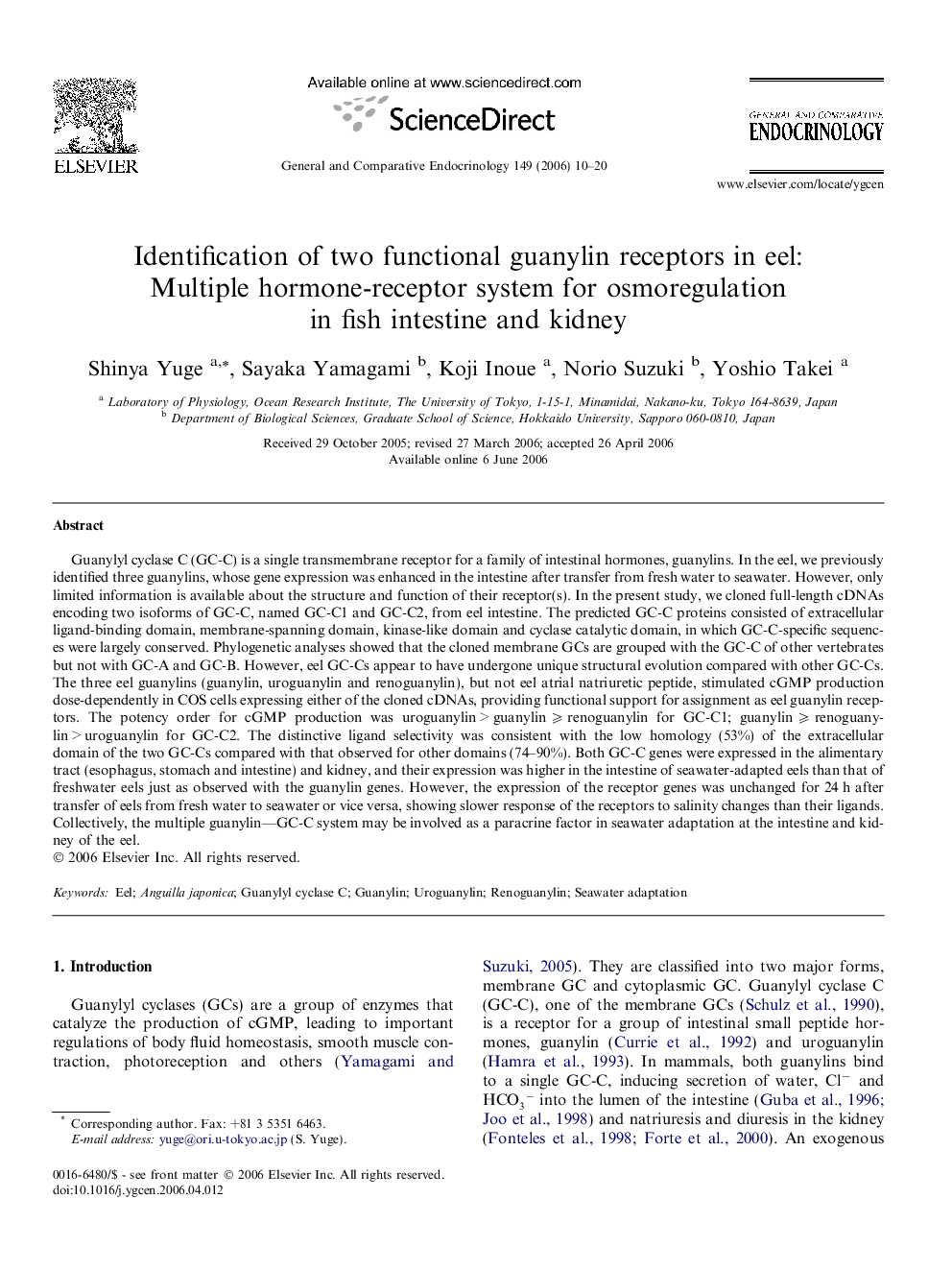| کد مقاله | کد نشریه | سال انتشار | مقاله انگلیسی | نسخه تمام متن |
|---|---|---|---|---|
| 2802293 | 1156196 | 2006 | 11 صفحه PDF | دانلود رایگان |

Guanylyl cyclase C (GC-C) is a single transmembrane receptor for a family of intestinal hormones, guanylins. In the eel, we previously identified three guanylins, whose gene expression was enhanced in the intestine after transfer from fresh water to seawater. However, only limited information is available about the structure and function of their receptor(s). In the present study, we cloned full-length cDNAs encoding two isoforms of GC-C, named GC-C1 and GC-C2, from eel intestine. The predicted GC-C proteins consisted of extracellular ligand-binding domain, membrane-spanning domain, kinase-like domain and cyclase catalytic domain, in which GC-C-specific sequences were largely conserved. Phylogenetic analyses showed that the cloned membrane GCs are grouped with the GC-C of other vertebrates but not with GC-A and GC-B. However, eel GC-Cs appear to have undergone unique structural evolution compared with other GC-Cs. The three eel guanylins (guanylin, uroguanylin and renoguanylin), but not eel atrial natriuretic peptide, stimulated cGMP production dose-dependently in COS cells expressing either of the cloned cDNAs, providing functional support for assignment as eel guanylin receptors. The potency order for cGMP production was uroguanylin > guanylin ⩾ renoguanylin for GC-C1; guanylin ⩾ renoguanylin > uroguanylin for GC-C2. The distinctive ligand selectivity was consistent with the low homology (53%) of the extracellular domain of the two GC-Cs compared with that observed for other domains (74–90%). Both GC-C genes were expressed in the alimentary tract (esophagus, stomach and intestine) and kidney, and their expression was higher in the intestine of seawater-adapted eels than that of freshwater eels just as observed with the guanylin genes. However, the expression of the receptor genes was unchanged for 24 h after transfer of eels from fresh water to seawater or vice versa, showing slower response of the receptors to salinity changes than their ligands. Collectively, the multiple guanylin—GC-C system may be involved as a paracrine factor in seawater adaptation at the intestine and kidney of the eel.
Journal: General and Comparative Endocrinology - Volume 149, Issue 1, October 2006, Pages 10–20